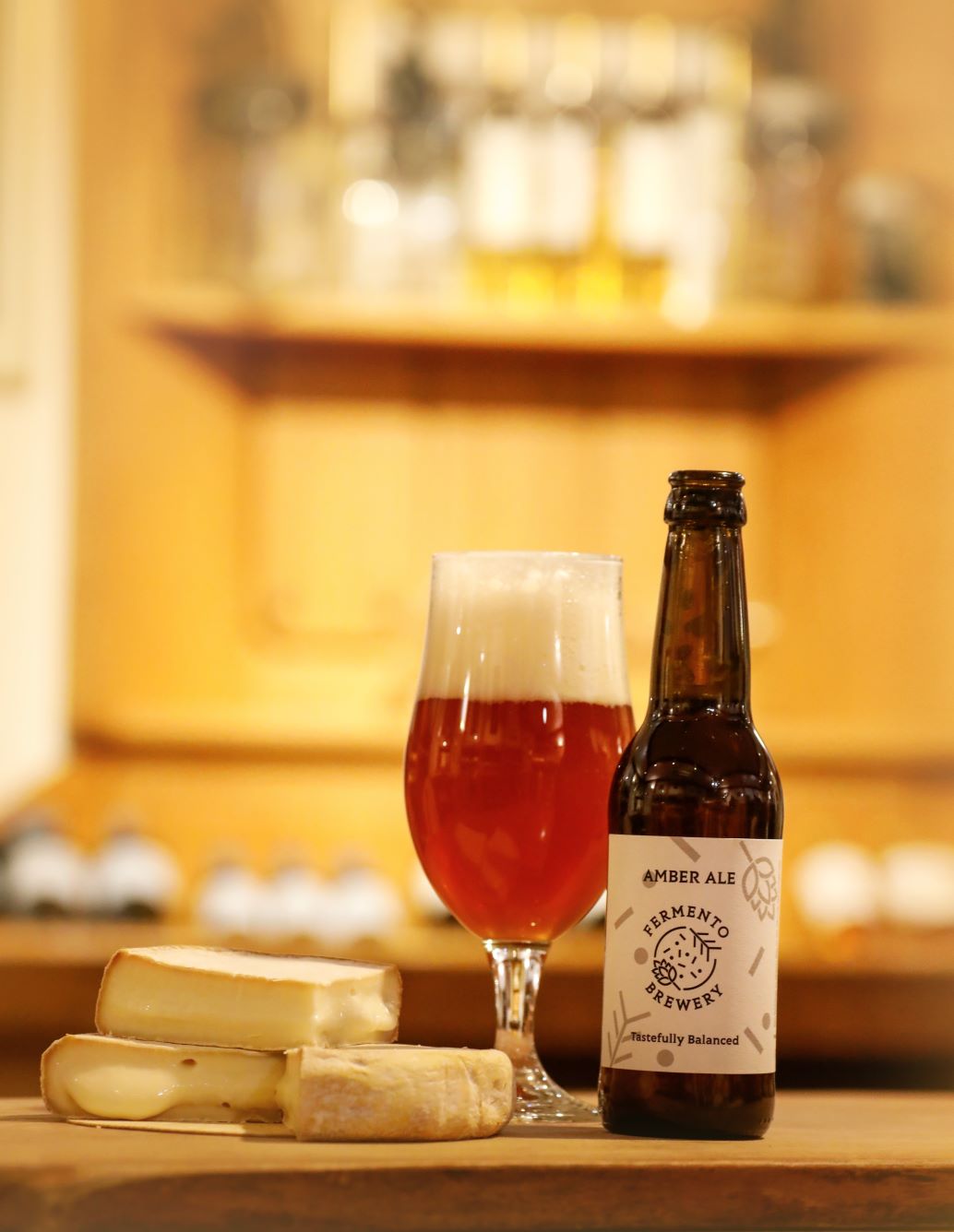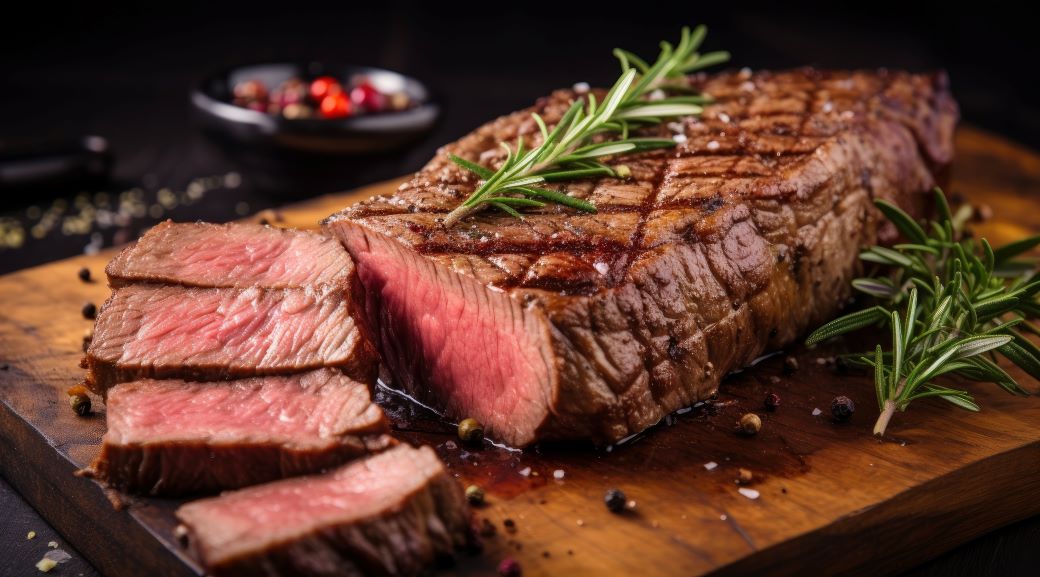
It is in Scotland that I discovered my love for beers. And that is thanks to their amber ale (Ale in British English is used as another word for beer. Local Scottish ales are extraordinary beers, smooth, tasty, not too carbonated, with fine bubbles like champagne and a foam as thick as a cappuccino. For me, it is impossible to resist a pint of good beer in a Scottish pub.
The Scots are very friendly people and one can expect an active social life in Scotland, in and outside the Pubs. I often meet new people and am immediately invited for a beer in the local pub. Beer in Scotland really brings people together!
One of many examples of how amber ale connects human beings in Scotland happened to me in Edinburgh after a football match between Italy and Scotland.
The game ended in a draw and after the match, a Scottish guy wearing an unusual half-Scottish/half-Argentine scarf approached me and a friend of mine on the way to the train station, complaining about the team’s performance and the result. He was upset and it was unpredictable where this would go. However, while walking together to the train station, after a genuine conversation about football and beer, we were invited to the pub and he offered us a pint.
It ended with a toast for the tie and before saying goodbye, I took the opportunity to ask the reason for his unusual scarf. The answer was simply: “It is the hand of God“, a clear reference to Maradona’s hand goal against England a few decades earlier in the World Cup. He kissed his scarf, shook hands, and with a smile walked away. We could not do anything else than laugh and keep drinking our Scottish Ale.

What does Amber ale mean? An overview of the beer style
What does Alemean? This type of beer is fermented by ale yeasts that rise to the top of the beer during production and ferment optimally at higher temperatures than lagers.
Does amber colour make an amber ale? It is a bit more complicated than that. Traditionally, it was all about colour. In fact, many amber ales are red-amber in colour and include traditional European styles: e.g. Scottish ales, Irish red ales and even German altbier. However, with the American craft beer revolution, some American Ambers that were formally classified in the pale ale category joined the amber ale style. These beers were red in colour, too dark to be called pale, because consumers were confused and expected a lighter coloured beer. American amber beers, therefore, are not only amber-coloured, but also have more hop aromas than traditional European beers in the same category.
The Scottish ale is part of the amber ale style, which includes beers ranging from light amber to dark amber, depending on the amount and type of roasted malts used. These malts impart a darker colour to the beer, as well as aromas of caramel, nuts, vanilla, chocolate, etc. This beer style is not sweet but not bitter either, and has a slight hop aroma. Irish ale is also malty and low in bitterness and alcohol. English ales have aromatic notes of hazelnut and caramel, and the best have a floral flavour. The German altbier originates from Düsseldorf and has a darker red color, and balanced floral hops and malt flavours and aromas. The american Amber ale has medium-high malt, nutty flavours and American hops with notes of citrus, fruit and pine, which stand out without making the beer bitter.

Pairing Amber Ales with fine appetizers
We tasted our Fermento Amber Ale beer with artisanal cheeses and with cured meats and ham. It is a great Antipasto that we propose and the best way to honour it is with a great craft beer.
Working together with a top cheese producer and an affineur from Switzerland (Milchhüsli) and France (Antony) I had access to great cheeses. We discovered that such a modern, hoppy beer combines perfectly with a broad spectrum of cheeses, ranging from soft (Reblochon) to semi-hard (Tete de Moine, Fontina) to hard (Provolone, young Grüyer, Tomme des Grisons). Despite their different textures, all cheeses have very unique taste, which goes very well with the ales. Fermento Amber ale is a modern beer with the malt aroma of Scottish ales and the hop flavour and taste of American amber ales. A balanced beer that goes well with savoury, aromatic and slightly spicy cheeses.
For example, Gruyère, which very much retains the aromatic grass of Swiss mountain meadows, goes well with the pine hops in the beer. Reblochon is creamy and has a nutty flavour that combines with the maltiness of the amber beer. The Italian cheese Provolone has a mild (dolce) to pronounced spiciness (piccante), which is enveloped by the hops of the amber beer.
Amber ale is also excellent with cold cuts. Hams and salami are part of classic Swiss Apéro or Italien Aperitivo and Antipasti. However, it is not just any cold cuts….. great beers deserve great food and my recommendation for Fermento Amber Ale and any great craft beer is to accompany selected cuts of meat only.
We have already explored and enjoyed Mortadella with Pizza as Roman Street Food and Apero specialty. Mortadella can be also served alone, sliced or cubed, accompanied by modern amber ale. The hops in the beer enhance the pepper and pistachio flavors. For the same reason, the salami Finocchiona ais also a good example of a cured meat that, thanks to its fennel seeds, pepper and special wine-like notes (it is sprinkled with red wine), is particularly suitable for the Fermento amber ale.
Amber ale is also excellent with ham. Unflavoured, the best hams are cured for at least 24 months and have a tender, fine fat that calls for beer bubbles. Not to mention the Spanish Pata Negra, whose fat is super delicious considering the way the animals are fed. I love amber beers with Swiss Bündnerfleisch (or Italian Bresaola)! Its savoury flavour dries out the mouth because there is little or no fat. We tasted the Fermento Amber Ale to match and, believe me, thanks to its bubbles and hops, the beer is refreshing after every mouthful of Bündnerfleisch.
Download the Fermento mini-guide for combining beer and cheese


BIER MARINADE FOR MEAT
Ingredients for 500g meat
Preparation time: 15 minutes
Marinade time: minimum 6 hours, optimal 12 hours
Fermento Amber Ale250mL
Extra virgin Olive oil100mL
Lemon juice1/2
bay leaf and/or optionally a sprig of rosemary1
large cloves of garlic2
medium onion1
pepper to taste
Cooking tender and healthier meat with Amber Ale
Finally, amber beers are very versatile for cooking. Here is a simple recipe, on how to marinate meat, with a delicious Mediterranean seasoning and with beer. Marinating makes meat not only more tender, but also healthier when it is grilled or barbequed, because it drastically reduces carginogenic substances (HCA-heterocyclic amines), that are formed due to the high temperatures the meat reaches when in contact with fire.
Step 1:
Chop up the bay leaf or rosemary. Slice the onion and garlic cloves very thinly.
Step 2:
Add pepper, lemon juice, extra-virgin olive oil and amber ale, mix well.
Step 3:
Pour the mixture into an oven dish where you have placed thickly cut slices of meat (steaks, chops, ribs, etc.) and cut them with a knife blade. Leave to rest in the refrigerator for at least 6 hours, remembering to turn the meat occasionally.
Step 4:
Just before cooking, remove the meat from the marinade and barbecue it directly, adding salt only at the end of cooking. You can also use the marinade during cooking to brush the meat.
Visit our beer online shop to get your Fermento Amber Ale

In Scotland or at home, have your amber beer now and let us know how you like it
Imagine being in Scotland, in a pub, drinking a well-crafted amber ale with a local or your good friends. Now imagine also getting yourself a great artisan cheese or a fine ham to appreciate with beer.
Abroad or at home, perhaps cooking with the same beer, enjoy and let me know in the comments below if you too believe that great beers deserve great food!
Read more about Stout beer style
Read more about honey beer style